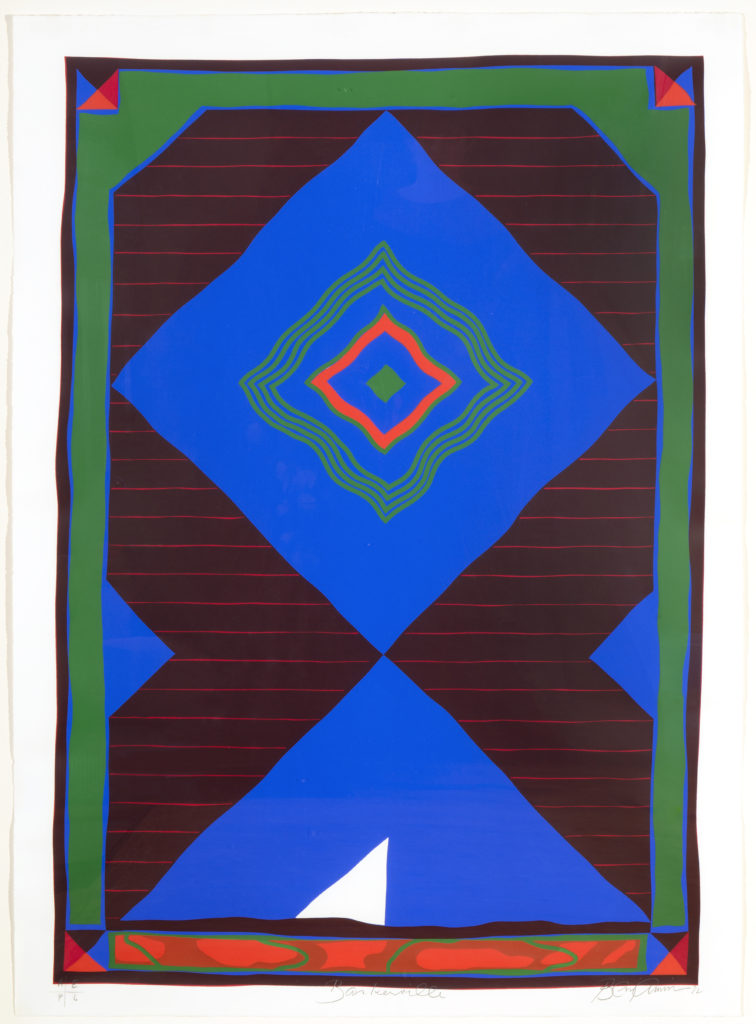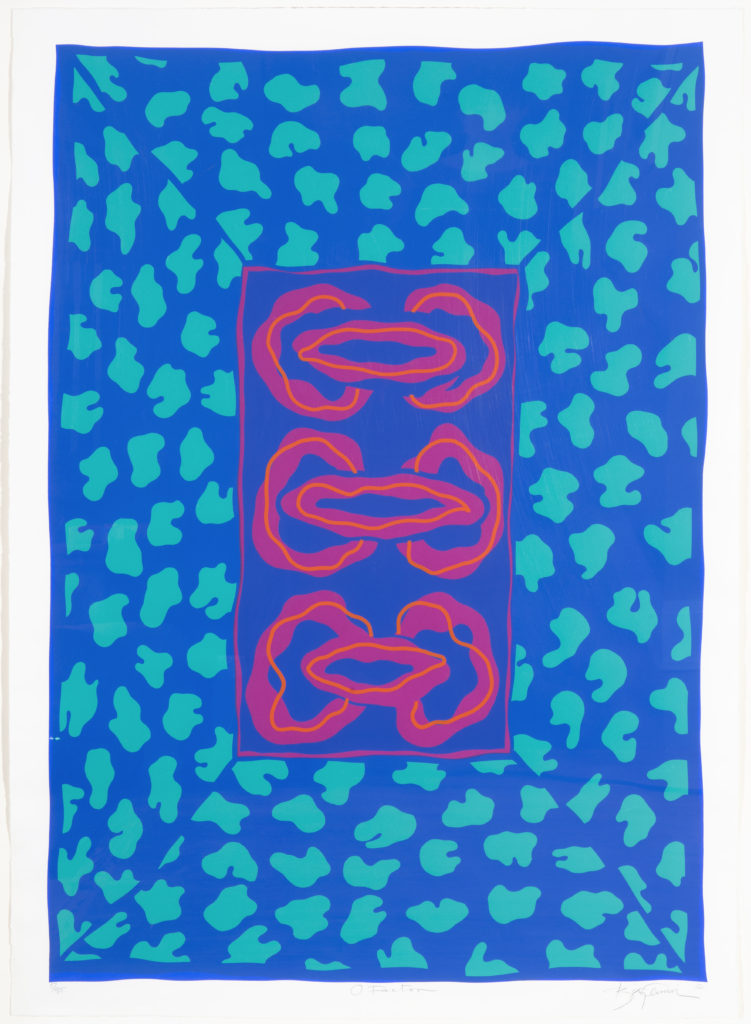(1931-2002)
Located in hallway CL 101 (Classroom Building, 1st floor)

© the Benjamin Estate. Photograph by the University of Regina.

© the Benjamin Estate. Photograph by the University of Regina.
(top) Baskerville, 1972
Serigraph on paper
40” x 29”
University of Regina President’s Art Collection; pc.1974.1
(bottom) O Factor, from the Roxy Bias series (5/95), 1972
Serigraph on paper
40” x 29”
University of Regina President’s Art Collection; pc.1974.3
Bold colour and playful, layered abstraction are the hallmarks of the work of British painter and printmaker, Anthony Benjamin. Forced to leave the restrictive program at Regent Street Polytechnic for his rebellious insistence on using colour in sculpture, Benjamin turned to painting. He later studied drawing under the legendary French artist Fernand Léger, in 1951. Benjamin became a member of the St. Ives artist colony after settling just outside the town with his family in the mid-fifties. It was here that his realist painting developed into gestural abstraction, a result of the Cornish landscape, and particularly the sea.
Returning to Paris in 1957, he enrolled at the Atelier 17 master studio. Here, his etching skills were sharpened and his gestural painting was translated into print in a way that was characteristic of Atelier 17 work, with dribbles, splatters and splashes. Whilst he became an accomplished printmaker, he also produced painting and sculpture throughout his life. A period of artistic success led to extensive traveling, exhibiting and teaching at universities and art schools around the world. In 1967 he came to Canada for appointments at the University of Calgary and York University. Again, new landscapes provided fresh inspiration, and the prairies appeared in a series of surreal drawings.
O Factor, a print held in several major international collections, was part of series entitled Roxy Bias. It was a response to a conversation with Brian Eno, during Benjamin’s term teaching at the Winchester School of Art while Eno was a student. Eno’s experiments with electronic music over painting led to his rejection by several tutors. A champion of Eno’s early work, Roxy Bias explored “how an image could give a parallel experience to music, to move, to shimmer, to vibrate through the use of colour and shape.”(1) In other words, to parallel Eno’s synthesized audio effects in visual art. Benjamin would return to some of the playful ideas first explored in this series during his senior years.
(1) Anthony Benjamin Trust. Anthony Benjamin. Web. 2 April 2016. <www.anthonybenjamin.org>


